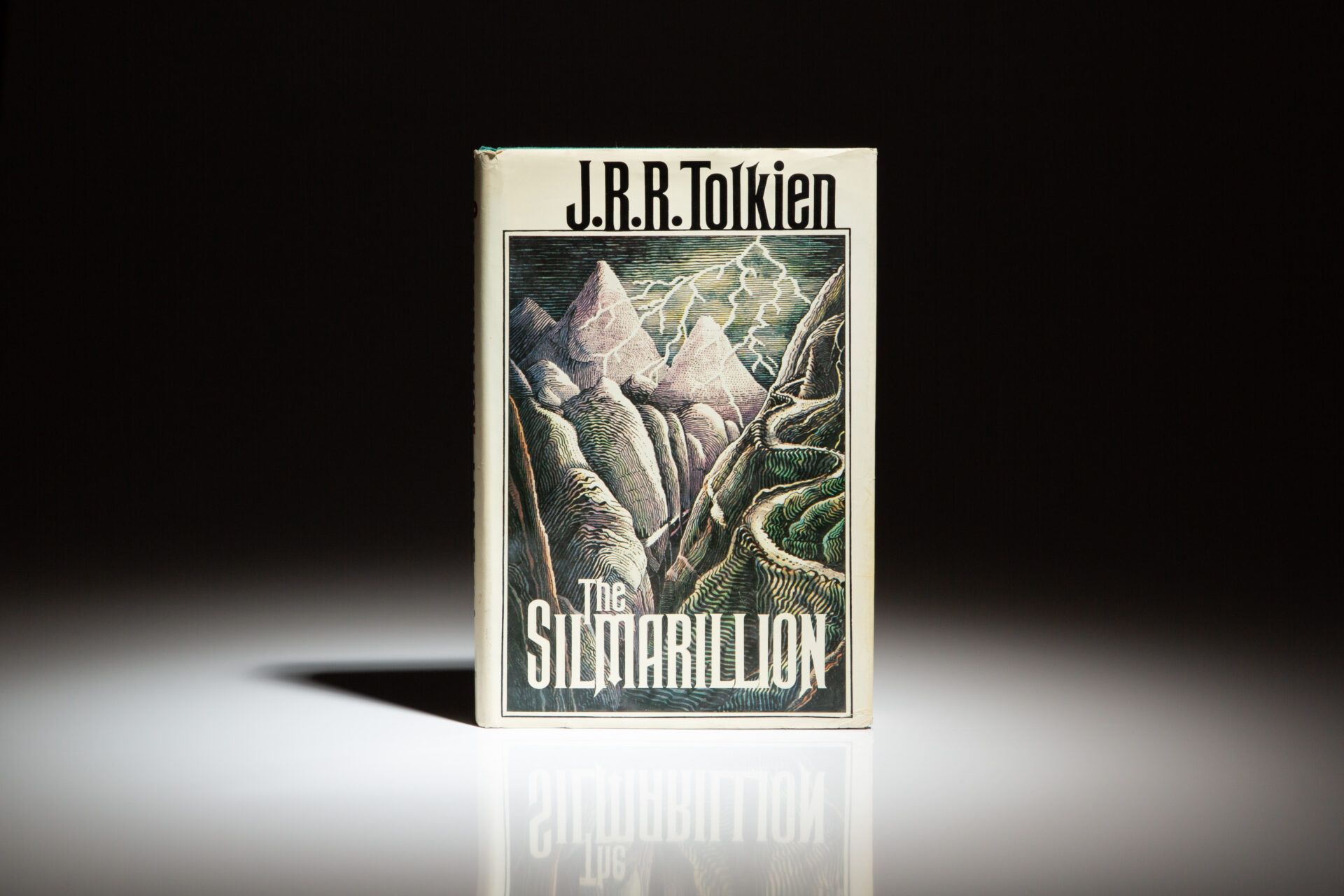
The Silmarillion is a captivating masterpiece penned by the legendary J.R.R. Tolkien, renowned for his enchanting tales of Middle-earth. While many are familiar with Tolkien’s best-known works such as The Lord of the Rings and The Hobbit, The Silmarillion remains somewhat of a hidden gem. It delves deep into the rich and mythical history of Middle-earth, uncovering the origins of the fascinating characters and events that shape Tolkien’s fictional universe. But did you know that there are several surprising facts about The Silmarillion that even the most ardent fans may not be aware of? From its evolution through various versions to the complex webs of characters and stories, this article will explore 20 intriguing tidbits about The Silmarillion that will leave you in awe. So, fasten your seatbelts and prepare for an illuminating journey through this remarkable work of literature.
Key Takeaways:
- The Silmarillion is not a typical novel, but a collection of stories and histories that lay the foundation for J.R.R. Tolkien’s Middle-earth, providing a deeper understanding of the world of The Lord of the Rings.
- The Silmarillion introduces readers to powerful characters, tragic love stories, and epic battles, expanding the scope of Middle-earth and inspiring countless other fantasy works.
The Silmarillion is not a traditional novel.
The Silmarillion is a collection of mythopoeic works by J.R.R. Tolkien, published posthumously by his son Christopher Tolkien. It is not a conventional narrative like The Lord of the Rings or The Hobbit but rather a compilation of stories, legends, and histories that provide the foundation for Tolkien’s Middle-earth.
The Silmarillion was Tolkien’s life’s work.
Tolkien spent most of his life creating the intricate world of Middle-earth, and The Silmarillion represents the culmination of his efforts. It contains the earliest accounts of this fictional universe, exploring the creation of the world, the rise and fall of ancient civilizations, and the struggles between good and evil.
The Silmarillion was initially rejected by publishers.
Despite the success of The Lord of the Rings, publishers initially turned down The Silmarillion due to its complex nature and lack of familiarity with the characters from Tolkien’s other works. It was only after significant revisions and the commercial success of the previously published novels that it finally found a publisher.
The Silmarillion provides backstory for The Lord of the Rings.
Many events and characters in The Lord of the Rings find their origins in The Silmarillion. The history of the Elven kingdoms, the Valar, and the mythical beings such as Morgoth and Sauron are all explored in detail, shedding light on the rich tapestry of Tolkien’s fictional world.
The Silmarillion introduces the epic battle between the forces of good and evil.
The Silmarillion delves into the epic conflict between the Valar, the powerful angelic beings who serve the supreme deity Eru Ilúvatar, and Morgoth, the fallen Vala who seeks to dominate Middle-earth. This cosmic struggle sets the stage for the battles that will shape the fate of the world in later ages.
The Silmarillion explains the origin of the Rings of Power.
The origins of the Rings of Power, such as the One Ring, are traced back to The Silmarillion. The intricate backstory reveals the forging of the rings, their distribution among the elves, dwarves, and men, and the subsequent corruption that plays a pivotal role in The Lord of the Rings.
The Silmarillion features powerful and memorable characters.
From the valiant heroism of Beren and Lúthien to the tragic tale of Túrin Turambar, The Silmarillion introduces readers to a host of fascinating characters who face immense challenges and shape the destiny of Middle-earth.
The Silmarillion explores the tragedy of the Noldor.
The Noldor, one of the clans of the High Elves, play a central role in The Silmarillion. Their tragic rebellion against the Valar and their pursuit of the stolen Silmarils, the precious jewels crafted by Fëanor, form the backbone of the book’s narrative.
The Silmarillion draws inspiration from various mythological and historical sources.
Tolkien drew upon a wide range of influences, including Norse mythology, ancient Greek epics, and medieval European history, to create the rich and immersive world of The Silmarillion.
The Silmarillion showcases Tolkien’s linguistic skills.
Tolkien’s passion for languages is evident in The Silmarillion, as he created several fictional languages spoken by different races and characters. Quenya, Sindarin, and Valarin are just a few of the languages developed by Tolkien for this epic work.
The Silmarillion was published after Tolkien’s death.
J.R.R. Tolkien passed away in 1973, and his son Christopher Tolkien diligently gathered and edited his father’s notes to bring The Silmarillion to publication in 1977.
The Silmarillion has a dedicated fan base.
Despite its complex narrative structure and profound themes, The Silmarillion has gained a devoted following over the years. Fans appreciate its depth, beauty, and exploration of the wider mythology behind Tolkien’s world.
The Silmarillion expands the scope of Middle-earth.
While The Lord of the Rings focuses on the Third Age of Middle-earth, The Silmarillion expands the timeline and reveals the events of the First Age, offering a broader perspective on the history and mythology of Tolkien’s universe.
The Silmarillion contains tales of love and tragedy.
Love stories like that of Beren and Lúthien or the doomed romance of Turin and his sister Nienor add emotional depth to The Silmarillion, showcasing Tolkien’s ability to weave complex relationships into his narratives.
The Silmarillion explores the concept of heroism.
Through the exploits of characters like Fingolfin, Eärendil, and Túrin, The Silmarillion delves into the themes of bravery, sacrifice, and the struggle against overwhelming odds.
The Silmarillion features divine beings and powerful creatures.
The Silmarillion introduces readers to the Valar, the higher beings who shaped the world, as well as the Maiar, their lesser counterparts. Additionally, ancient creatures such as dragons and balrogs make appearances, adding to the sense of wonder and danger within the narrative.
The Silmarillion is a source of inspiration for many other fantasy works.
The expansive and intricate world-building of The Silmarillion has influenced countless authors and artists, shaping the landscape of modern fantasy literature.
The Silmarillion reveals the origins of Middle-earth.
For those seeking a deeper understanding of the mythology and history that underpins The Lord of the Rings and The Hobbit, The Silmarillion provides an invaluable resource.
The Silmarillion showcases Tolkien’s passion for detail.
Throughout The Silmarillion, Tolkien’s meticulous attention to detail is evident, from the genealogies of prominent characters to the intricate landscapes and cultures of Middle-earth.
The Silmarillion speaks to the enduring themes of hope and redemption.
Despite the tragedies and darkness within its pages, The Silmarillion ultimately upholds themes of hope, redemption, and the triumph of good over evil.
Conclusion
In conclusion, The Silmarillion by J.R.R. Tolkien is a fascinating and intricate collection of tales that delves deep into the history and mythology of Middle-earth. From the creation of the universe to the legendary battles between the forces of good and evil, Tolkien weaves together a rich tapestry of characters, cultures, and events that captivate readers and leave them hungry for more. The book presents a comprehensive understanding of the origins and legends that set the stage for Tolkien’s famous The Lord of the Rings trilogy. Its depth and complexity make it a must-read for any fan of Tolkien’s works and a treasure trove of lore for those who crave a deeper exploration of Middle-earth.With its detailed storytelling and profound themes, The Silmarillion remains a timeless masterpiece that continues to inspire and enchant readers around the world. It serves as a testament to J.R.R. Tolkien’s genius as a storyteller and his unparalleled ability to create a vibrant and immersive fantasy world.
FAQs
1. What is The Silmarillion?
The Silmarillion is a posthumously published collection of mythopoeic works by J.R.R. Tolkien. It serves as a prequel to his famous The Lord of the Rings trilogy, providing a detailed history and mythology of Middle-earth.
2. Is The Silmarillion suitable for readers new to Tolkien’s works?
The Silmarillion is considered more challenging than Tolkien’s other books, such as The Hobbit and The Lord of the Rings. It is recommended for readers who are already familiar with Tolkien’s writing style and have a strong interest in the world of Middle-earth.
3. Can The Silmarillion be read as a standalone book?
While The Silmarillion can be appreciated on its own, it is best enjoyed in conjunction with Tolkien’s other works, particularly The Hobbit and The Lord of the Rings. Reading these books provides a more complete understanding of the world and characters referenced in The Silmarillion.
4. Are there any spoilers for The Lord of the Rings in The Silmarillion?
As a prequel, The Silmarillion does contain some spoilers for The Lord of the Rings. However, the events and characters in The Silmarillion take place thousands of years prior to The Lord of the Rings, so the impact on the reading experience may be minimal.
5. Are the stories in The Silmarillion similar in tone to The Lord of the Rings?
The Silmarillion is generally considered to have a more mythic and epic tone compared to the adventure-focused narrative of The Lord of the Rings. It explores themes of creation, fate, and the struggle between good and evil in a more abstract and philosophical manner.
6. Can The Silmarillion be read by younger readers?
The Silmarillion is intended for a mature audience due to its complex language, extensive world-building, and theological themes. Younger readers may find it challenging to fully grasp and appreciate the depth of the stories.
7. Are the stories in The Silmarillion interconnected?
Yes, the stories in The Silmarillion are interconnected and form a cohesive narrative. They provide a detailed historical backdrop and explore the origins and relationships between various characters, races, and locations in Middle-earth.
If you're fascinated by the rich tapestry of epic tales, delving into the realms of mythology, or exploring the captivating world of fantasy literature, we've got more in store for you! Uncover the secrets behind Kynren, an awe-inspiring live-action spectacle that brings England's history to life. Immerse yourself in the timeless allure of mythological stories, brimming with gods, heroes, and legendary creatures. Lastly, embark on a journey through the pages of The Name of the Wind, Patrick Rothfuss' masterpiece that has enchanted readers worldwide. Get ready to be transported to new realms of imagination and wonder!
Was this page helpful?
Our commitment to delivering trustworthy and engaging content is at the heart of what we do. Each fact on our site is contributed by real users like you, bringing a wealth of diverse insights and information. To ensure the highest standards of accuracy and reliability, our dedicated editors meticulously review each submission. This process guarantees that the facts we share are not only fascinating but also credible. Trust in our commitment to quality and authenticity as you explore and learn with us.


